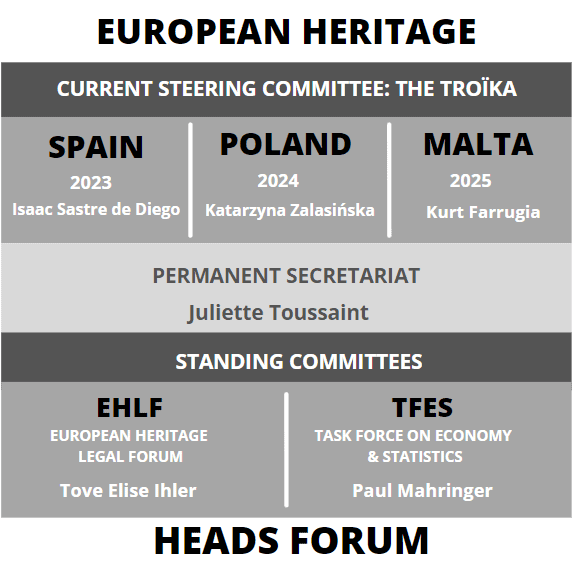Anti-graffiti agents
ICELAND
Do any of the countries have a strategy regarding which chemicals they are using for the surface treatment of nature stones in order to hinder graffity to stick to the stones/ or just so it is easier to clean it off, and also in order to protect the surface of nature stone.
FINLAND
“One safe material to protect buildings etc from unwanted graffiti is this: https://www.pss-interservice.com/products/graffiti-surface-protection/graffiti-protection.html
Safety Data Sheet: https://www.keim.com.au/files/PSS20_TDS.pdf
It is a safe, sugar-based material, that is easily removed with hot water.”
CZECH REPUBLIC
There are no particular regulations or guidelines regarding which chemicals to be used to protect natural stone against graffiti in Czech Republic. National Heritage Institute, which is the main state heritage authority, prefers to minimize the use of permanent antigraffiti treatments on monuments in general as a controversial or extreme intervention. As better and permanent the antigraffiti serves the worse reversibility and higher risk brings to the practice. So the present general approach is to avoid antigraffiti first by prevention or passive barriers and only in very special cases where this fails to apply temporary antigraffiti systems which can be removed in future. As a final restoration step we also used to apply water repellent (siloxan based products) on sandstone monuments (in cases where it is appropriate) and this treatment consequently helps to reduce graffiti impact and also cleaning of it.
THE NETHERLANDS
We all have a hard time ‘cleaning’, without damaging the surface of materials of monuments. Also in the Netherlands graffiti is a real challenge to cope with. Some good Dutch practices: one advise is to remove it as soon as possible, within 24 hours. Another advise is to put an antigraffiti-system on the natural stones.
We wrote a concise report on this topic already in 2004. It is online available but unfortunately in Dutch only: https://www.cultureelerfgoed.nl/publicaties/publicaties/2004/01/01/graffiti-op-monumenten—gids-techniek-39
Maybe you can have it translated.
SCOTLAND
The use of graffiti barriers by Historic Environment Scotland (Scotland’s national Historic Environment agency https://www.historicenvironment.scot/) on its properties is quite sporadic and dealt with on a case by case basis. Their use on listed buildings and scheduled monuments either in our own estate or in general would require legal consents to be in place prior to their application. In the latter case this would be Scheduled Monument Consent (SMC) which HES administers. In applying for SMC a case would need to be made to justify the use of the proposed product and provide the necessary technical data for review and consideration. Further specialist advice is often sought from the Applied Conservation department for more technical and scientific overview. Following this it may be that the specific product is refused but a more appropriate alternative is suggested.
It should also be noted that not all historic surfaces are suitable for such finishes due to original polychromy, or intrinsic surface fragility or decay. HES has only used graffiti barriers sparingly and in instances of repeated contamination affecting the same area, particularly if the surface is carved, inscribed or particularly culturally significant. We have additionally been involved in providing advice to the private sector regarding these treatments based on our own trials and experience; most recently to Edinburgh City Council.
The types of barriers available on the market tend to fall into two categories; permanent and sacrificial.
Permanent barrier systems
Types of permanent systems include silicon- and polyurethane-based treatments and claim water repellent properties and easy-clean surfaces, whilst maintaining breathable moisture transference in the substrate.
Pros – A permanent, low maintenance finish that enables enhanced cleaning
Cons – Non-reversible, so a permanent addition to the stone with unknown long-term effects. Any hydrophobic effect will change the behaviour of the stone, sometimes with unknown consequences. Can make the stone darker and /or shinier than the untreated material. Neighbouring treated and untreated stone will look different to one another particularly in wet weather. Diminishing efficacy over time. Will eventually need to be reapplied over earlier application, further impacting moisture transference.
Sacrificial barrier systems
The second type are finishes that are applied to stone at risk of contamination/graffiti. The premise is the surface finish is reversible and when cleaned off takes the overlying graffiti with it. The surface then needs to be retreated in readiness for any further graffiti. Types of treatment in these categories include sucrose and soluble wax-based systems.
Pros – Sucrose and wax based systems are breathable and removable with warm water, and are not hazardous in themselves (though the overlying graffiti paints may be). Easily applied by brush or spray. Readily removed with low-pressure, low-heat water-cleaning (steam-cleaning). Low toxicity and reasonably green. Easily reapplied to maximise cleaning effectiveness.
Cons – Higher maintenance and ongoing costs due to the need to reapply after cleaning. These factors may result in longer bouts between cleaning (more volume of graffiti?) to minimise costs. Diminishing efficacy over time (until removed and reapplied).
Summary
Most anti-graffiti products on the market are developed for the protection of fresh new materials, be it stone or concrete in modern urban locations. The sensitivities of older stone surfaces that may have active decay mechanisms or uneven environmental accretions are not uppermost in their development. Obviously repeated graffiti cleaning of any sort, whether on treated or untreated stone puts additional pressure and wear on it. However, on historic or natural surfaces this degree of attrition will be magnified, due to the more complex surface structure. Prevention, as ever, is preferable to treatment.
HES have tended not to advocate silicon/polyurethane based treatments as there is the concern that they may trap moisture beneath the surface and lead to greater problems over time, despite their vaunted breathability. Their comparative permanence is also an issue and at odds with the reversibility advocated by international conservation ethics. Our trials with sucrose-based systems have proven more successful, though there is the understanding that it is more labour-intensive due to the need to reapply. Despite this, it still remains much less labour-intensive than progressive solvent cleaning of graffiti from untreated stone surfaces, and less harsh to the stone surface.
In recent comparative research in 2017 both types of coating were found to shed graffiti less well as they age. Additionally permanent treatments were shown to measurably reduce moisture transition, which might prove detrimental to the stone –
These findings may point to the targeted use of sacrificial barriers, possibly including a regular regime of removal and reapplication, as the best route to ensure long lasting protection, effective re-cleaning and minimal permanent impact on the cultural material or object. This approach also leaves the substrate reasonably unaffected, and suitable for treatment with improved technologies presently in development, further down the line.
We also have two relevant publications on our website that provide guidance (short and detailed, respectively), mostly focused on treatment rather than prevention:
Inform Guide: Graffiti Removal | Historic Environment Scotland
TAN 18 – The Treatment of Graffiti on Historic Surfaces | HES (historicenvironment.scot)
Obviously this is a very general overview, but I hope it is of some assistance in your decision-making regarding these products.
NORWAY
When it comes to automatically protected archaeological sites such as rock art, standing stones, runestones etc, interventions like this is most likely regulated by the Norwegian Cultural Heritage Act. You will need a dispensation from the law if interventions shall be carried out. The authority to give dispensation for this area lies with the county level in Norway. As a general remark, we can say that the Norwegian Directorate for Cultural Heritage, normally would promote less invasive methods, i.e. other forms of protection than surface treatment.
FLANDERS
To prevent graffiti, there are two types of products: temporary and self-sacrificing products or permanent products.
In Flanders, we prefer the temporary and self-sacrificing products (polysaccharides and wax-based products).
These products are removed while cleaning the graffiti. After each cleaning the product has to be reapplied. These products are less visible and more vapour permeable than the permanent products. The permanent products are also hard to remove.
We have a factsheet concerning this matter (in Dutch; source: www.monumentenwacht.be). A machine translated version of this factsheet can be found as an annex.
More technical information can also be found in the following training manual (in Dutch). A machine translated version of this manual can be found as an annex as well. You find the information concerning graffiti on p.30-34 and p.85-90.
Flanders Heritage developed earlier, in collaboration with the Scientific and Technical Centre for the Building Industry (WTCB) and the Fonds voor Vakopleiding in de Bouwnijverheid (FVB), the following guidance for restoration professionals,:
This publication discusses the removal of graffiti (Chapter II.3 p. 33-37) and treatment for protection against graffiti (Chapter II.12.5 p. 96-100)
Highlighted in this publication:
– If you can’t completely remove the graffiti, the message is still: it is more important to keep the stone than get a very clean view. So if you notice that you have to break the stone to remove the graffiti completely (see figure 8 for example), it is better to learn to live with graffiti, instead of damaging the façade
– When using antigraffiti, it is especially important to remember that:
- It must not be automatic to apply an antigraffiti. After all, they can cause a lot of damage if they are chosen and/or applied in an ill-considered manner.
- If the antigraffiti are chosen and applied wisely, they can greatly facilitate the maintenance of a building
- However, sometimes it is wiser not to apply protection against graffiti at all. Especially in buildings that are permanently affected by moisture, it is wiser not to apply protection
Flanders Heritage is also a member of the board of directors of WTA Nederland-Flanders. This is the Scientific-Technical Group for Recommendations on Building Renovation and Conservation of Monuments that is active in the Netherlands and Flanders. Together with its partners, this association organizes study days, congresses and site visits for heritage professionals to guarantee or improve the quality of heritage management
On April 22 2022 WTA Nederland-Flanders organizes a study day to discuss the philosophy of whether or not to intervene in the event of contamination of a façade, the causes of change in the appearance of a facade, the government’s attitude towards cleaning facades of monuments and, of course, the wide range of techniques that exist, paying attention to which technique in which case is most appropriate. Particular attention will be paid to innovations in the field: laser cleaning is demonstrated. All this illustrated with striking practical cases from Flanders and the Netherlands.
Our representative Inge Debacker will present there the Vision of Flanders Heritage on the cleaning of monuments.
SWEDEN
The advice from the colleagues working with stone conservation is not to use any chemical treatment on culture heritage object and buildings, not even to hinder graffity. I copy a link to a short information paper National Heritage Board has produced.



0 Comments